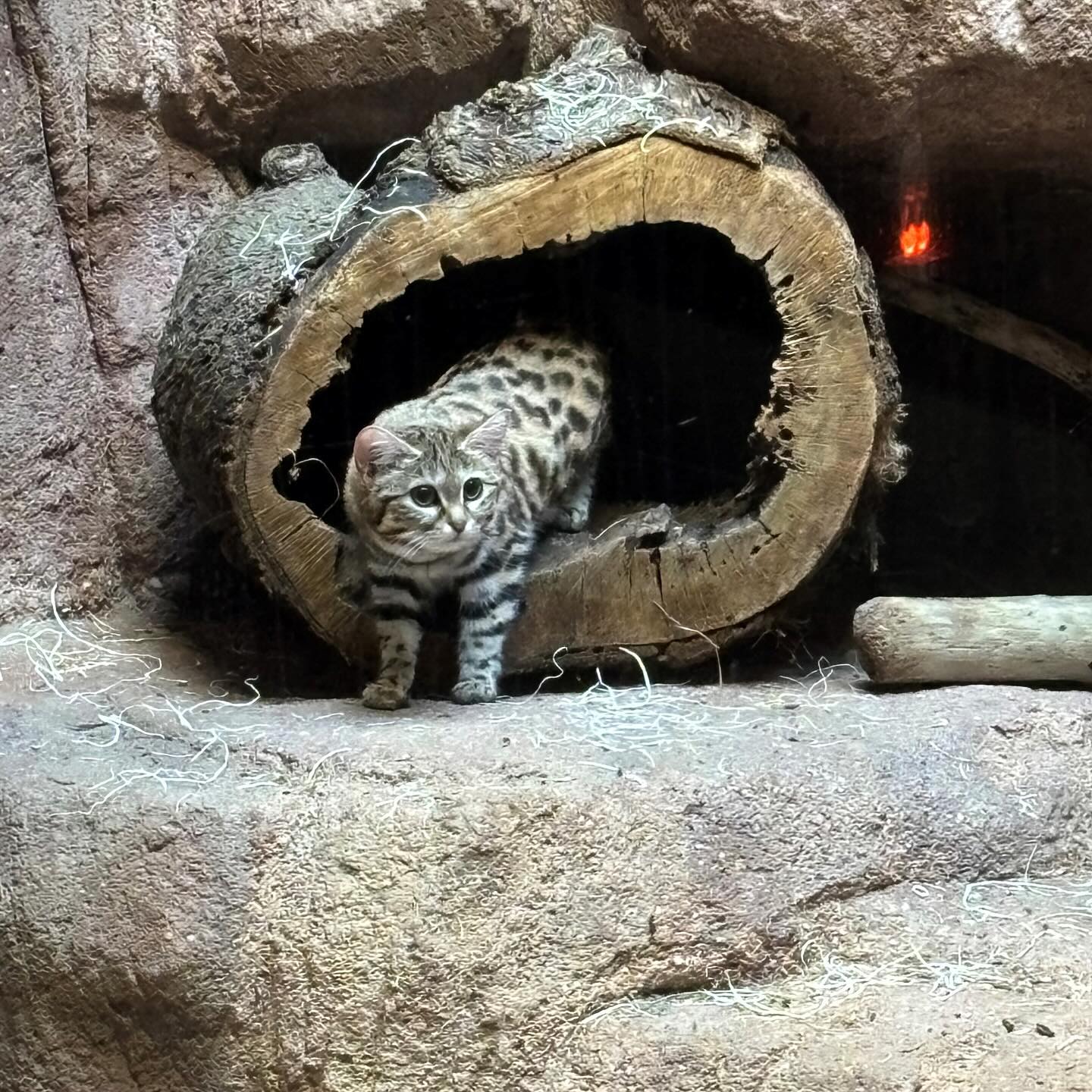- The remarkable predatory skills of the black-footed cat and its unexpectedly high hunting success rate.
- The significance of small stature in animals, challenging typical perceptions of size and strength.
- The role of zoological institutions in conserving species like the black-footed cat and promoting biodiversity.
- The importance of environmental stewardship and wildlife conservation in safeguarding vulnerable species.
- Riverbanks Conservation Outpost’s efforts and dedication to the care of the black-footed cat, Amari.
The black-footed cat, one of nature’s most proficient hunters, captivates zoologists and wildlife enthusiasts alike. While its petite size might suggest vulnerability, this diminutive feline boasts an astonishing hunting prowess, achieving success in over 60% of its pursuits. The black-footed cat defies conventional logic that bigger is better, proving that skill and agility can triumph over sheer size.
These cats, native to southern Africa, are renowned for their stealth and efficiency. Often mistaken for domestic cats due to their size, they are substantially different in behavior and skills. With a weight ranging from 2 to 5 pounds, their small stature is more of an asset than a hindrance. Their ability to adapt to the harsh conditions of arid regions speaks to their resilience and specialized hunting tactics.
Zoological insights into the black-footed cat reveal a species highly attuned to its environment. Their keen senses and stealthy approach allow them to hunt rodents and birds effectively. The success rate of these cats is a topic of interest for zoologists, who study their techniques to gain a deeper understanding of predator-prey dynamics. The black-footed cat’s ability to catch prey consistently is a testament to its evolved hunting strategies, which are both complex and precise.
Amari, the black-footed cat residing at the Riverbanks Conservation Outpost (RCO), serves as an ambassador for her species. Her presence offers visitors a unique opportunity to learn about these captivating predators and the intricate ecosystems they inhabit. The RCO provides a sanctuary that mimics their natural environment, promoting healthy behavior and offering insight into their daily lives. Here, conservationists work diligently to study and preserve the black-footed cat, gathering data crucial for understanding their role in nature.
Conservation efforts at facilities like the Riverbanks Conservation Outpost play a vital role in maintaining biodiversity. By offering a habitat that supports natural behaviors, zoos contribute to the survival of species that face environmental challenges. This involves both in-situ conservation, where species are protected in their natural habitats, and ex-situ conservation, where they are cared for outside of it. Such initiatives are essential for understanding and protecting vulnerable species, ensuring that these cats and others like them continue to thrive.
Wildlife conservation extends beyond protecting individual species. It encompasses fostering an appreciation for the intricate web of life, emphasizing the interconnectivity between species and their ecosystems. By preserving predators like the black-footed cat, we maintain the balance of ecosystems, which benefits a wide range of organisms and plants. The success of conservation programs relies on the collaboration of scientists, conservationists, and the public, each playing a role in promoting sustainable practices.
Public education is a cornerstone of these conservation efforts. By engaging visitors through interactive exhibits and educational programs, zoos elevate awareness and inspire proactive environmental stewardship. Understanding the challenges faced by species like the black-footed cat encourages public participation in conservation efforts. Simple actions like supporting sustainable practices and advocating for wildlife protection contribute to preserving the natural world.
The Riverbanks Conservation Outpost exemplifies the dedication required to care for species like Amari. Its commitment to high-quality animal welfare, research, and conservation not only serves to protect the black-footed cat but also inspires a wider appreciation for all forms of life. Visitors are invited to explore these programs, gaining insight into how they can influence positive change in biodiversity conservation.
In summary, the story of the black-footed cat is more than a tale of successful hunting. It is a narrative of resilience, adaptation, and the importance of conservation. Facilities like the Riverbanks Conservation Outpost showcase the beauty and necessity of preserving our planet’s biodiversity, one species at a time. Through their efforts, we are reminded that every creature, regardless of size, plays a crucial role in the tapestry of life.
*****
Source Description
Size matters not – just ask Jedi Master Yoda. Likewise, don’t let the small stature of the black footed cat mislead you. Known as one of the most successful hunters in the animal kingdom, the black-footed cat has over a 60% success rate.
Come by to see our black-footed cat, Amari, at Riverbanks Conservation Outpost (RCO) Tunnel to say hello and


